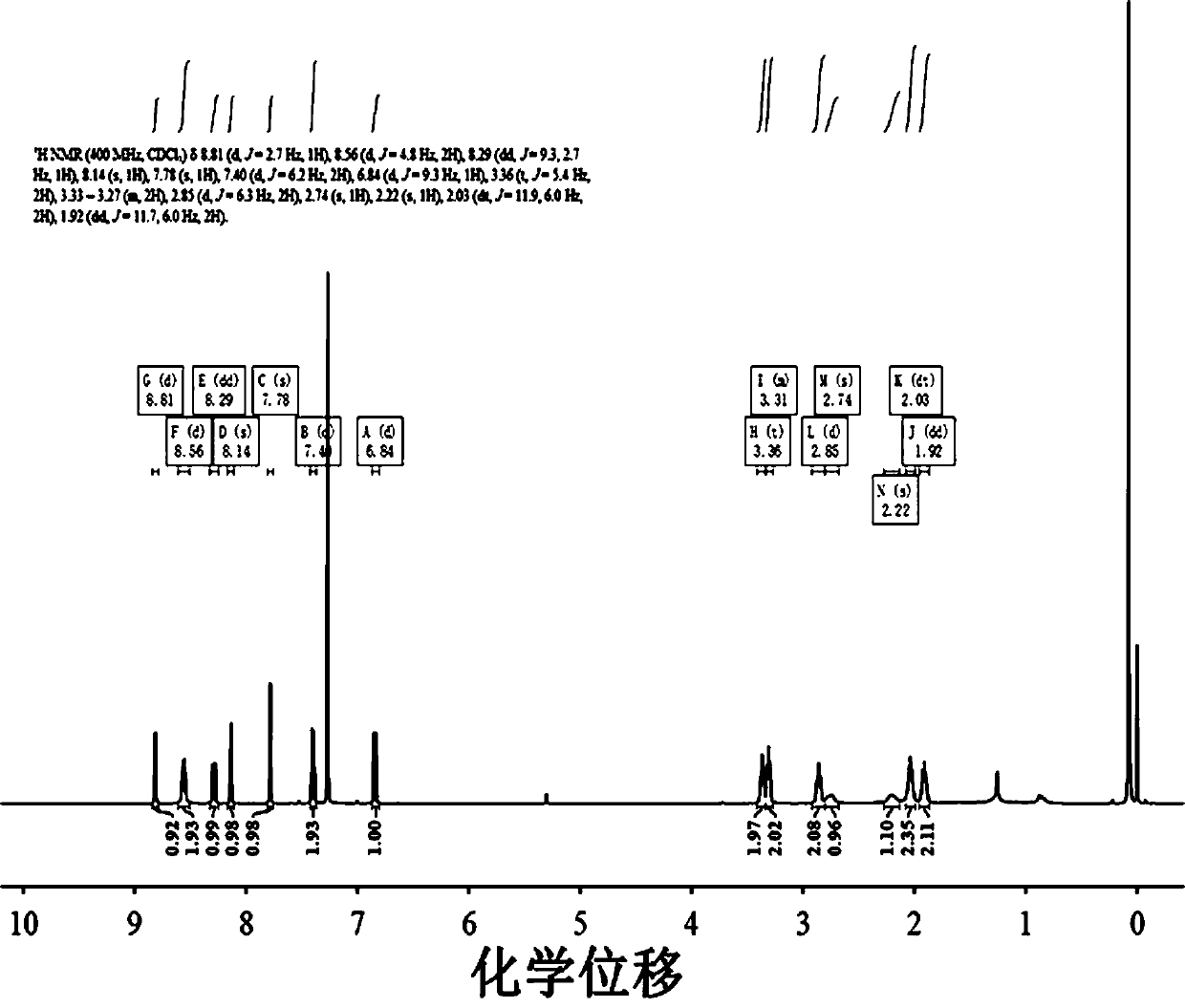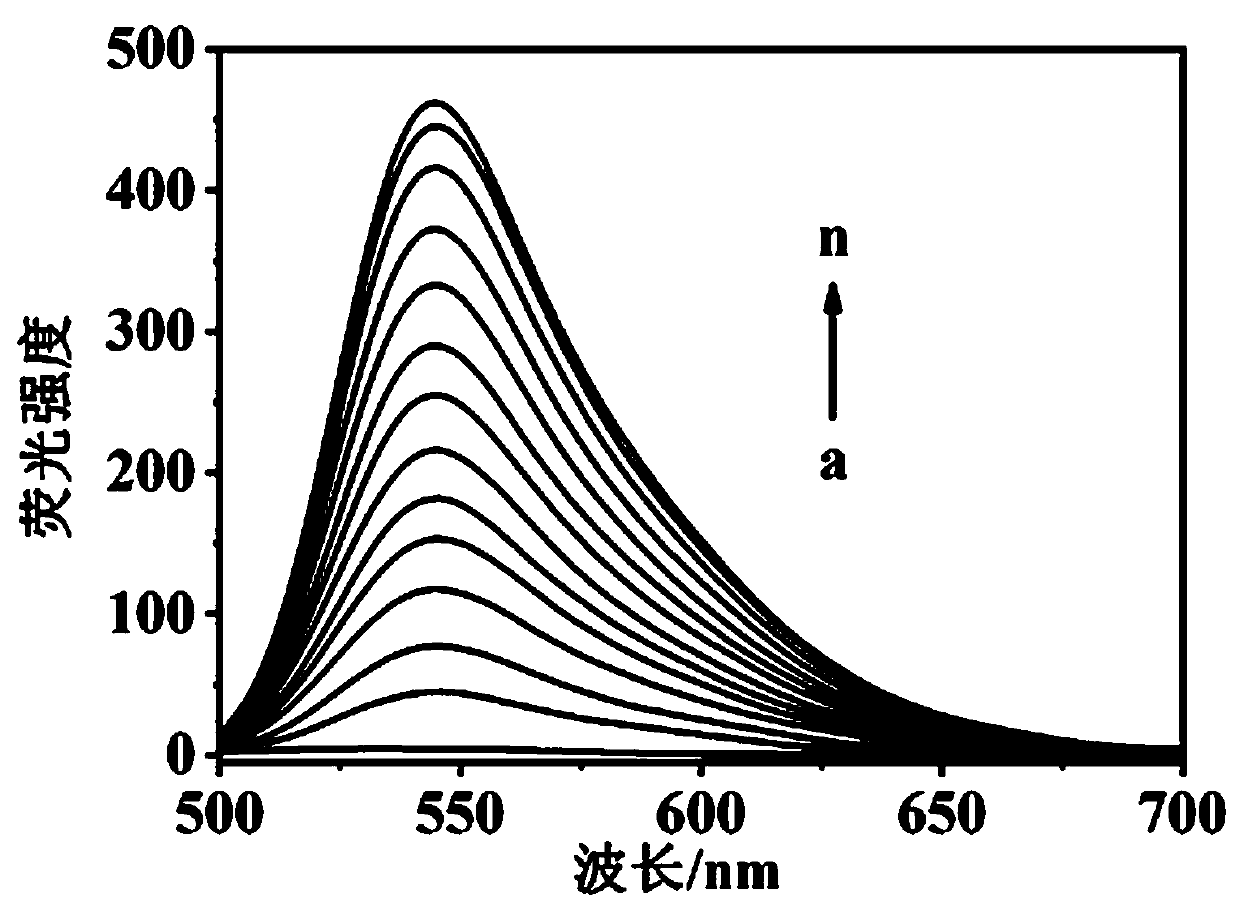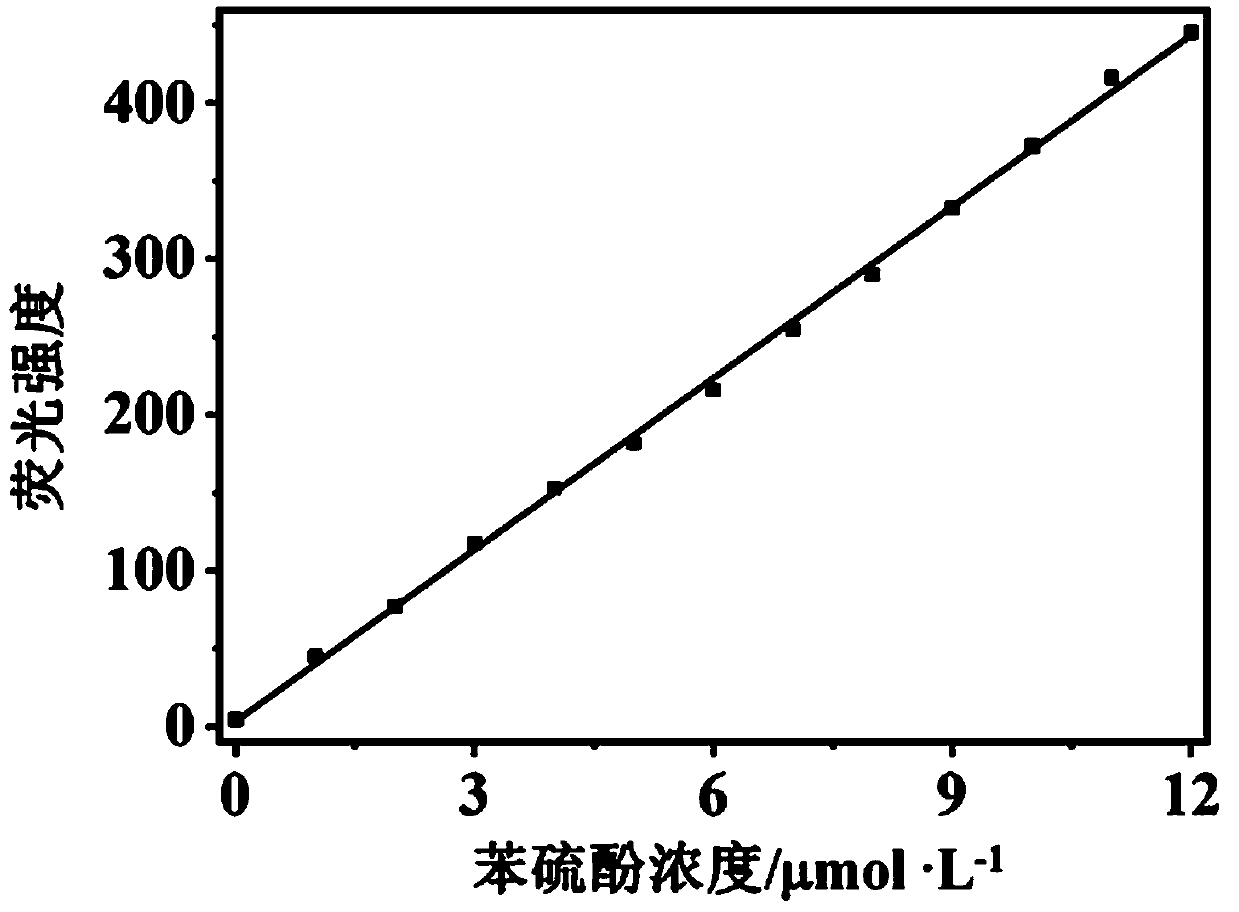Reactive fluorescent probe for detecting thiophenol and synthesis method and application thereof
A fluorescent molecular probe, thiophenol technology, applied in fluorescence/phosphorescence, chemical instruments and methods, luminescent materials, etc., can solve the problems of complex synthesis, insufficient selectivity and sensitivity, poor water solubility, etc., and achieve stable optical performance. , high sensitivity, high synthesis yield effect
- Summary
- Abstract
- Description
- Claims
- Application Information
AI Technical Summary
Problems solved by technology
Method used
Image
Examples
Embodiment 1
[0033] Example 1: Synthesis of Fluorescent Molecular Probes
[0034] Dissolve compound 2 (0.2g, 0.522mmol) and 4-pyridineacetonitrile (0.05g, 0.522mmol) in absolute ethanol (10mL), then add piperidine (0.1mL) to the reaction solution, and reflux at 80°C React for 6 hours. After the reaction was finished, the filtrate was removed by suction filtration, and the filter cake was retained, purified by column chromatography, and the eluent was dichloromethane / ethyl acetate (1:1, volume ratio), and spin-dried under reduced pressure to obtain 0.221 g of a yellow solid ( Yield: 88%). The product structural formula is as follows:
[0035]
[0036] 1 H NMR (400Hz, CDCl 3 ): δ8.81(d, J=2.7Hz, 1H), 8.56(d, J=4.8Hz, 2H), 8.29(dd, J=9.3, 2.7Hz, 1H), 8.14(s, 1H), 7.78 (s,1H),7.40(d,J=6.2Hz,2H),6.84(d,J=9.3Hz,1H),3.36(t,J=5.4Hz,2H),3.33–3.27(m,2H) ,2.85(d,J=6.3Hz,2H),2.74(s,1H),2.22(s,1H),2.03(dt,J=11.9,6.0Hz,2H),1.92(dd,J=11.7,6.0 Hz,2H).( figure 1 ). MS[ESI]:m / z, calcd for[M+H] ...
Embodiment 2
[0037] Example 2: Fluorescent detection of probes to thiophenol
[0038] The molecular probe prepared above was dissolved in a phosphoric acid mixed buffer solution (10 mM, pH 7.4) to prepare 10 μmol L -1 probe solution. Add 2 mL of prepared 10 μmol L to a 3 mL cuvette -1 Probe solution of the present invention, then add different concentrations of thiophenol and mix evenly, test its fluorescence spectrum, the results are as follows figure 2 shown. The fluorescence emission intensity of the solution at 545nm is plotted against the concentration of thiophenol, and the concentration of thiophenol is 0–12 μmol L -1 In the range, there is a good linear relationship between the two ( image 3 ), the quantitative detection of thiophenol in this concentration range can be realized. And this probe is not affected by some other common substances, such as sodium nitrate, copper chloride, cysteine, glutathione, homocysteine, sodium carbonate, sodium sulfide, sodium acetate, sodium ...
Embodiment 3
[0039] Embodiment 3: the test of probe of the present invention to thiophenol in the cell
[0040]After cultured human gastric cancer cells (MGC-803) were cultured in 10 μM PBS solution of the probe of the present invention at 37° C. for 1 h, the cell images obtained had no fluorescence. However, MGC-803 cells were cultured at 37°C for 1 h in the culture solution containing the probe of the present invention, then added thiophenol, and cultured with the solution containing thiophenol for 1 h, after being washed with PBS buffer, the fluorescence of the cells could be obtained. imaging, see attached Figure 5 . This shows that the probe of the present invention has good cell membrane permeability and can be used for cell imaging analysis in the field of biomedicine.
PUM
 Login to View More
Login to View More Abstract
Description
Claims
Application Information
 Login to View More
Login to View More - R&D
- Intellectual Property
- Life Sciences
- Materials
- Tech Scout
- Unparalleled Data Quality
- Higher Quality Content
- 60% Fewer Hallucinations
Browse by: Latest US Patents, China's latest patents, Technical Efficacy Thesaurus, Application Domain, Technology Topic, Popular Technical Reports.
© 2025 PatSnap. All rights reserved.Legal|Privacy policy|Modern Slavery Act Transparency Statement|Sitemap|About US| Contact US: help@patsnap.com



